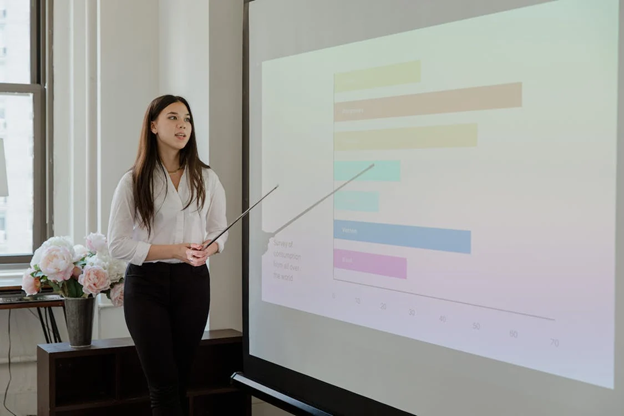What are language barriers and why do they matter for multilingual teams?
In the context of the workplace, a language barrier occurs when team members are unable to understand or effectively use a common working language. In multilingual teams — where employees speak different languages or have varying proficiency in the common language — these barriers can significantly undermine performance, decision-making, and cohesion. Research from the Harvard Business Review shows that unstructured multilingualism can create friction in even the most talented global workforces.
What challenges do language barriers present in multilingual teams?
When your team includes multiple languages and cultural backgrounds, communication friction becomes real. Key challenges include:
- Misunderstandings and delays: Messages get lost, instructions mis-interpreted, leading to project slow-downs.
- Reduced knowledge sharing: Team members who struggle to follow the spoken language may hold back from contributing.
- Unequal participation and trust issues: Proficiency differences can create power imbalances and undermine trust between colleagues.
- Talent and morale impact: Staff who feel excluded because of language limitations may disengage or leave the team.
- Market-reach limitations: Without addressing language barriers, companies may struggle to operate in global, multilingual markets or connect with international customers.
What benefits emerge when you overcome language barriers in multilingual teams?
Addressing language challenges unlocks major advantages, particularly for HR professionals, team leaders, and business owners seeking to build high-performing, inclusive workforces:
- Stronger collaboration: When communication flows freely across languages, teams align faster, share insights, and act decisively.
- Broadened talent pool: Recruiting and retaining individuals from diverse linguistic backgrounds expands your capacity and perspectives. See our Corporate Language Services page for related solutions.
- Improved market reach: Multilingual teams bring cultural fluency and language skills to engage customers, partners, and regions previously inaccessible.
- Faster, better decision-making: When language barriers shrink, meetings end sooner, misunderstandings drop, and time-to-action improves.
- More inclusive culture and lower turnover: Employees feel seen, heard, and capable of contributing which this supports retention and engagement.
How can organizations reduce language barriers in the workplace?
Here’s a step-by-step framework to strengthen communication within multilingual teams:
- Conduct an audit of language-related risks.
Determine which teams are multilingual, how proficient members are in the primary workplace language, and where misunderstandings happen most often. - Establish a clear language strategy and communication policy.
Define what languages are used when, how translation or interpretation is handled, and how employees can ask for support. Leadership must acknowledge the language dimension of team strategy. - Offer targeted language support initiatives.
Focus not only on general language training but role-specific programs (customer interactions, project meetings, technical discussions) and peer-to-peer language help teams. - Adapt communication practices.
Use clear, simple language (avoid idioms), visual aids, written follow-ups, and structured check-ins. Encourage employees to paraphrase key points. - Monitor, measure, and refine.
Track misunderstandings, meeting follow-up times, employee feedback, and multilingual staff retention. Use results to refine your approach.
Which tactics should HR and team leaders prioritize when managing multilingual teams?
Below is a comparison table of key tactics for managing and leading multilingual teams effectively, especially where language barriers exist:
| Tactic | Why it matters | Practical tip |
|---|---|---|
| Inclusive meeting structure | Prevents language-based exclusion in discussions | Provide agenda beforehand, use breakout groups by proficiency, and summarize verbally and in writing. |
| Language peer mentoring | Utilizes internal linguistic diversity to build capacity and trust | Pair bilingual employees with colleagues less confident in the team’s working language for regular check-ins. |
| Translate key documents and visuals | Ensures comprehension when language proficiency varies | Create bilingual job aids or infographics; offer translation of policies, safety training, or onboarding materials. |
| Cultural communication training | Language and culture intersect—understanding nuance improves collaboration | Offer short modules or webinars on communication styles, idioms, and direct vs. indirect expression. |
| Feedback loops for non-native speakers | Increases participation and highlights hidden communication issues | Conduct regular surveys or drop-in sessions asking: “Do you feel your input is heard?” |
How does live instructor-led training support overcoming language barriers?
At Workplace Languages, we emphasize live, instructor-led corporate language training (via webinar or virtual classroom) and onsite training for teams facing language barriers. Unlike self-paced courses, our approach offers real-time practice, live interaction, and immediate feedback — which is critical when addressing complex communication challenges in multilingual environments.
Key advantages of live instructor-led sessions include:
- Interactive role-plays and scenarios that mirror your team’s real-world tasks.
- Opportunities for participants to ask questions, clarify in real time, and observe peer responses.
- Flexible delivery across global time zones and customizable to your organization’s language and industry needs.
- Facilitated discussions about cross-language team dynamics and cultural nuances.
When should an organization consider corporate language training?
Consider language training solutions for your business when you observe any of the following in your multilingual workforce:
- Frequent miscommunications or rework tied to unclear instructions.
- Employees hesitant to speak up due to language concerns.
- Teams with high potential but low cohesion across linguistic sub-groups.
- Expansion into new markets requiring multilingual customer interactions.
- High turnover among multilingual staff who feel undervalued or isolated.
How does this tie into global workforce trends?
As business becomes more globalized, multilingual teams are increasingly the norm. Organizations that handle language barriers proactively are more agile, inclusive, and competitive. Studies from the show that cultural and linguistic differences significantly impact communication effectiveness. When managed properly, multilingualism becomes a competitive advantage.
What next steps should you take?
Here’s a concise roadmap to help you overcome language barriers in your business:
- Secure leadership buy-in by presenting the benefits of language-inclusive communication.
- Run a diagnostic of your current multilingual environment. Request a quote for customized corporate language training.
- Define your communication framework: working languages, translation supports, and team expectations.
- Launch a pilot live instructor-led language program.
- Measure outcomes (clarity, fewer misunderstandings, higher engagement) and scale successful models.
- Embed language and cultural fluency as a continuous competency—integrate with onboarding, training, and HR development. Explore professional translation services to ensure your written materials are accessible by all.
FAQ
- Q: What is the most common language barrier in a multilingual team?
- A: Uneven proficiency in the workplace language (often English), which causes hesitancy, misunderstandings, or lack of participation.
- Q: Can technology alone resolve language barriers?
- A: No. Technology helps but can’t replace live interaction, real-time practice, and human cultural understanding.
- Q: How long does it take to reduce language barriers?
- A: Improvement often appears within 3–6 months of targeted language training and policy changes, with deeper cultural integration over time.
- Q: Should training focus on general language skills or role-specific communication?
- A: Role-specific training is more effective because it’s directly relevant to daily tasks and interactions.
- Q: How should we measure success?
- A: Track communication clarity, participation rates, fewer misunderstandings, and improved employee feedback.




